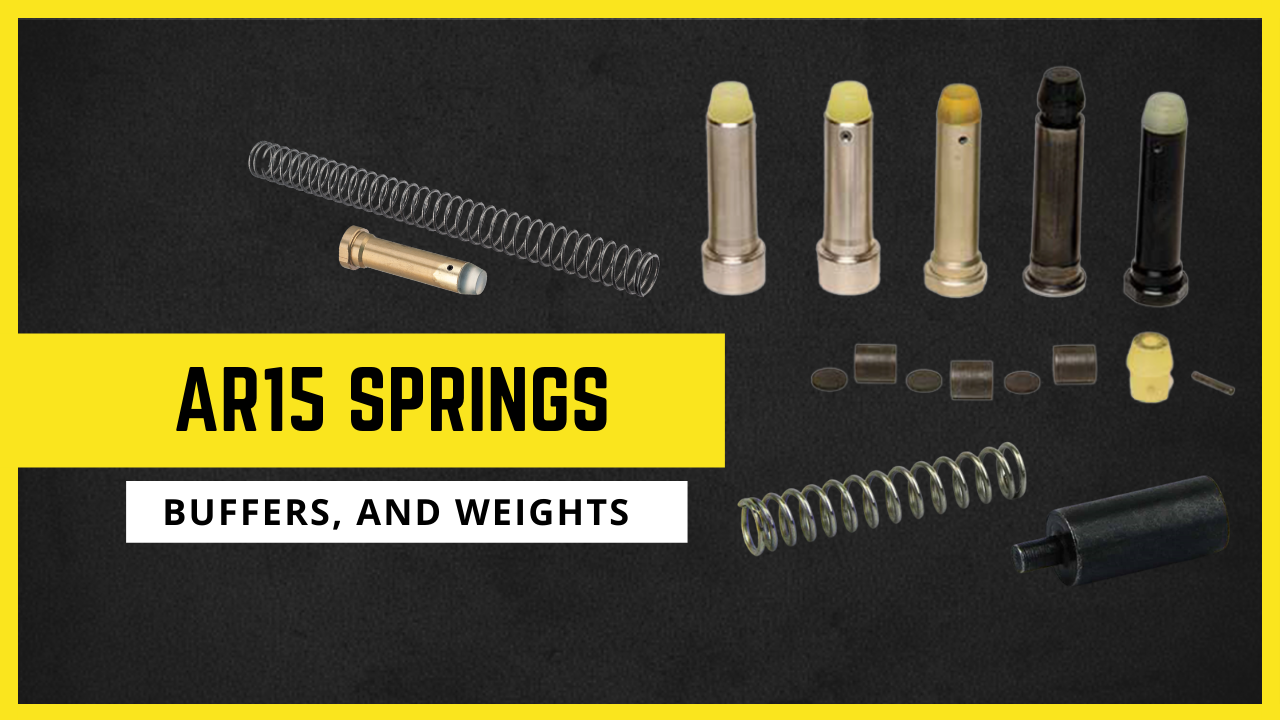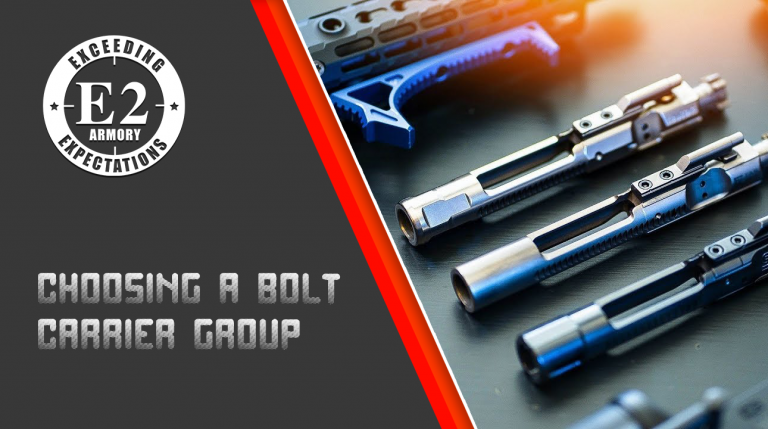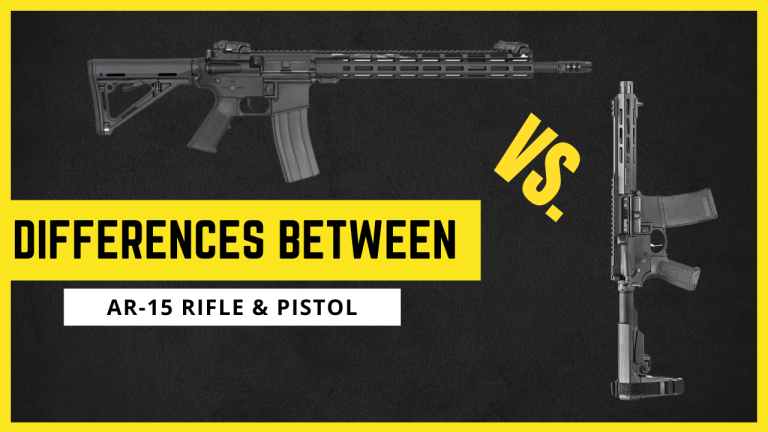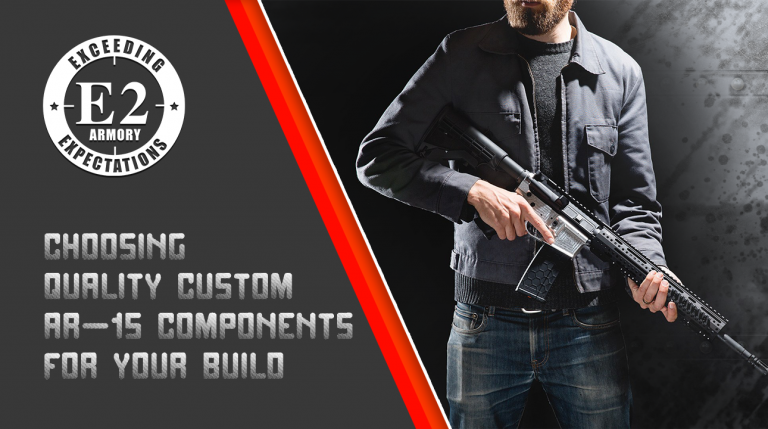AR15 Springs, Buffers, and Weights
While it may seem like a small and unimportant part, the buffer of an AR15 is actually one of the most important pieces on your rifle. Without it, your gun will not be able to function at all. The buffer and recoil spring in an AR15 helps to mitigate the gun’s recoil and controls the bolt carrier group by helping it cycle the ammo.
So if a buffer is so important, why do you never really hear about it? It may be because it is such a simple piece of the gun, and most don’t realize just how important it is. But what kind of buffer weight should you have? And what about the springs? Let’s talk about it!
The Buffer
A buffer in your AR15 has many different jobs, but there are three main purposes. The first is to absorb all of the energy the bolt carrier group has as it compresses the spring in the tube. The second job is to push the bolt carrier group back into the ar15 upper receiver and chamber another round. Last but certainly not least, the buffer will help to reduce and control all of the felt recoil that the shooter feels.
The buffer has a spring that assists it, and the flat face of the buffer sits in front of the spring at the opening of the tube. These parts rest inside of the buffer tube, and the tube is connected to your upper receiver via a latch plate and castle nut. When the spring compresses with the bolt carrier group slams against the buffer, it drives it backwards in the tube. Once the spring reaches its limit, it springs back and pushes the buffer up to the front. This forces the bolt carrier group back into the upper receiver and chambers another round. This whole process takes place in less than a second.
Also Read: 6 Things That Every AR-15 Owner Should Know How to Do
Buffer Weights Explained
When you have a buffer, you may at some point hear a faint rattling sound from the inside. Have you ever wondered what causes this? These are the weights that are inside. These small weights are separated by small rubber pieces, and act as the real buffers. If the buffer did not have these weights, along with a little bit of space between them, the buffer would be forced to transfer all of the energy straight into the buttstock. This, in turn, would send all of the recoil straight into your shoulder.
A lighter weight buffer will move much faster, but absorb less of that energy and require lighter ammo loads to be most effective. If you have too little weight, the recoil will punch harder and your entire system, including the receiver, buffer, and bolt carrier group will wear out much quicker. If you have too heavy of a buffer, you could also suffer from jams or failures to cycle. So how much weight should your buffer have?
Different Buffer Weights
There are many different buffer weights that you can find, and each will have its own specific uses, advantages, and disadvantages. The first is carbine weight of 3 ounces. This includes three steel weights, and is generally considered the golden standard for most AR15 platform rifles. Most AR15 carbines will use a carbine length gas system with a 16 inch barrel, so a carbine weighted buffer is perfect for this. Recoil is generally very moderate and the reliability is great. Carbine buffers can also work really well in mid-length gas systems, which keeps its great reliability but the felt recoil is reduced even more.
Heavy H buffers are designed to be around 3.8 ounces, and include one tungsten weight and two steel weights. These are made for when a store-bought AR15 is “over-gassed” and the carbine gas system hits a little too hard and the bolt carrier group is a little violent. If the recoil is too bad, shooters can switch to this buffer weight that is around 20% heavier and help to reduce the felt recoil and reduce any wear and tear on the gun. If this is not enough, you can even go heavier to an H2 Buffer. These are 4.6 to 4.7 ounces and include two tungsten weights and one steel weight. These buffers are popular options with pistol length gas systems, although many shooters will still opt for this weight if the H buffer still feels a little too rough.
Next you have the H3 buffer, which is around 5 to 5.4 ounces. These include three tungsten weights, and is one of the heaviest buffer weights used to swap out with a carbine buffer if it feels a little too punchy. Many pistol shooters also opt for this buffer. You also have pistol buffers that are anywhere from 5 to 8.5 ounces Some AR15 pistols are chambered with actual pistol rounds like 9mm. These pistol rounds use a blowback operation to cycle the bolt, and so the added pressure might mean you need to get rid of your regular buffer completely. This is where a pistol buffer could come into play.
Adding or Removing Weights
You don’t actually need to buy a brand new buffer whenever you want more or less buffer weight. Buffers can also be expensive, so instead you can easily take apart your existing buffer and buy lighter or heavier weights. Most buffers can easily be taken apart with a simple Allen wrench. Simply unscrew the buffer, add or take out any weights you need to, and then reassemble and you are ready to go.
Final Thoughts
Many shooters are not aware just how important their buffers, springs, and weights really are to their AR15. But with a little homework, you can set up your buffer and weight to get your firearm performing perfectly and find the buffer and ideal weight for your setup. As you can see, there are plenty of different buffer weights out there, and finding the right one could help your gun perform.
Also Read: Building an AR-15 Guide: All the Parts You Are Going to Need








